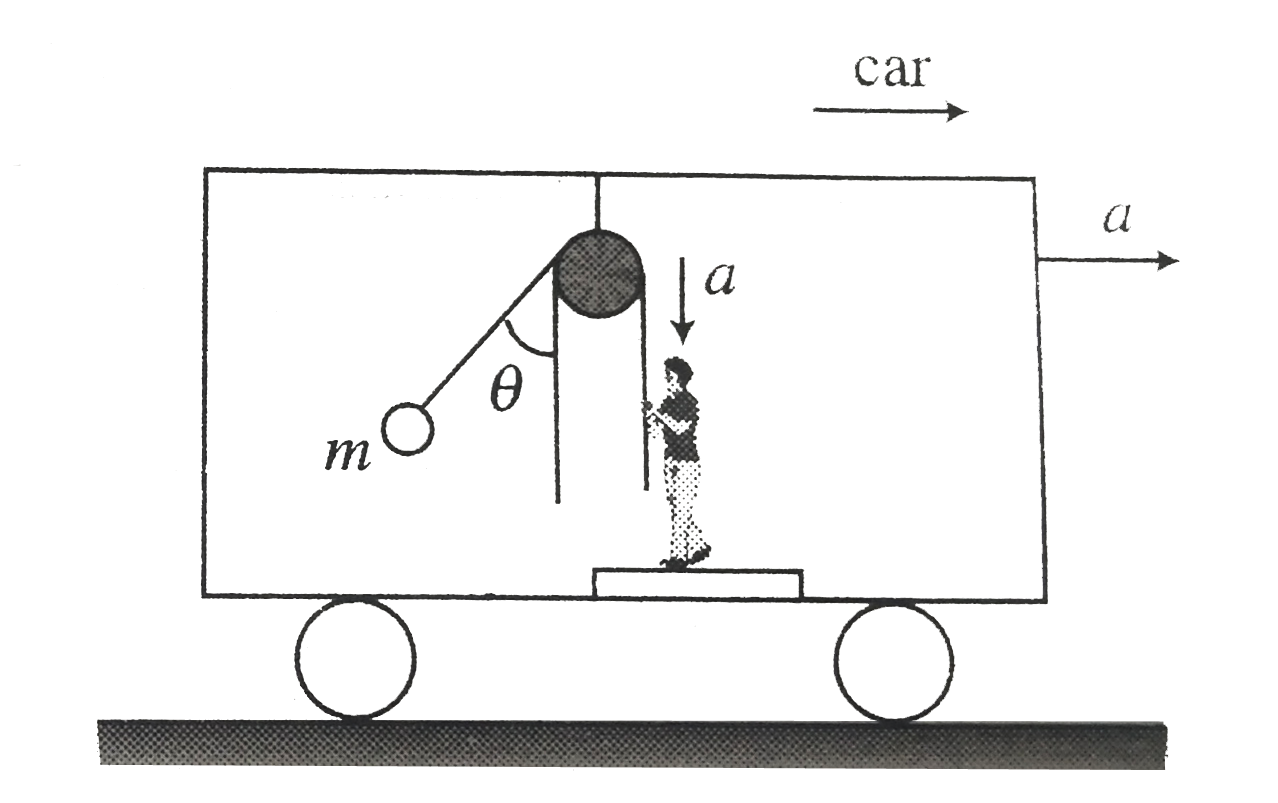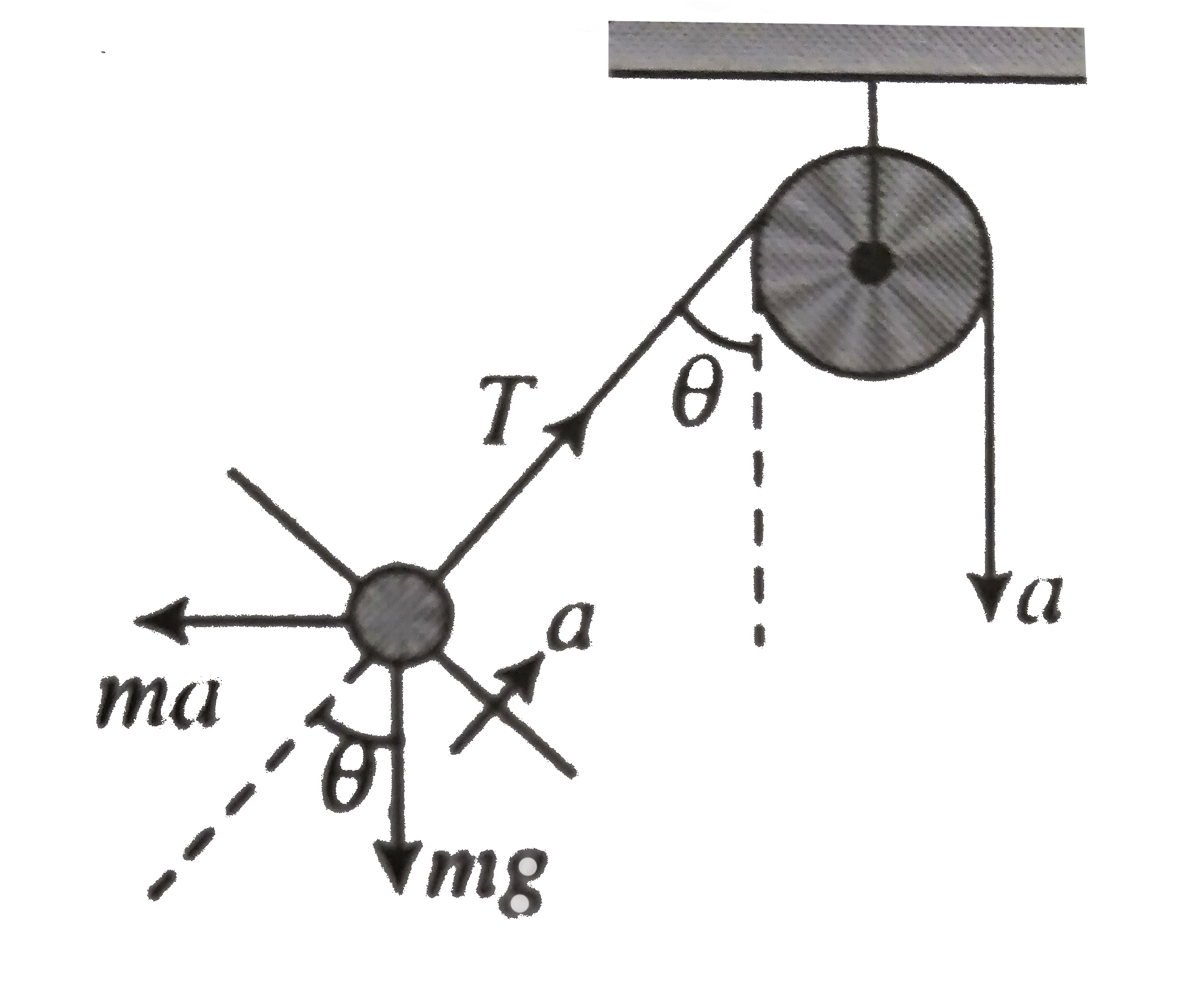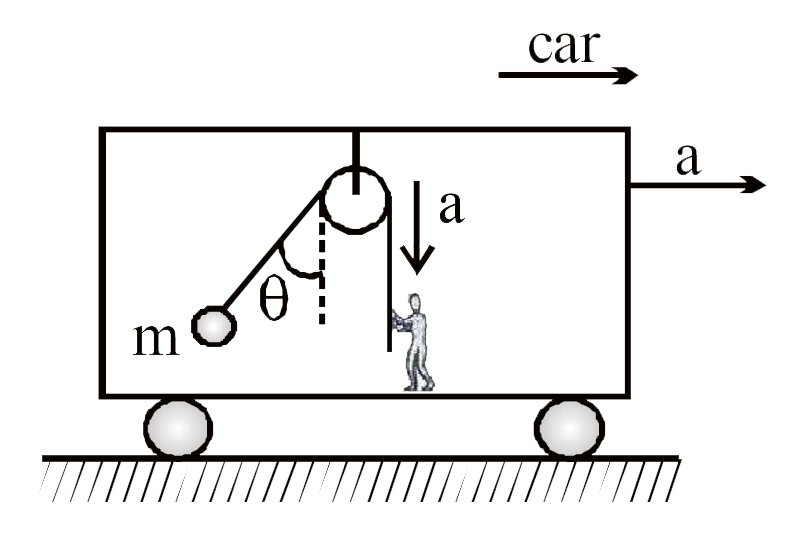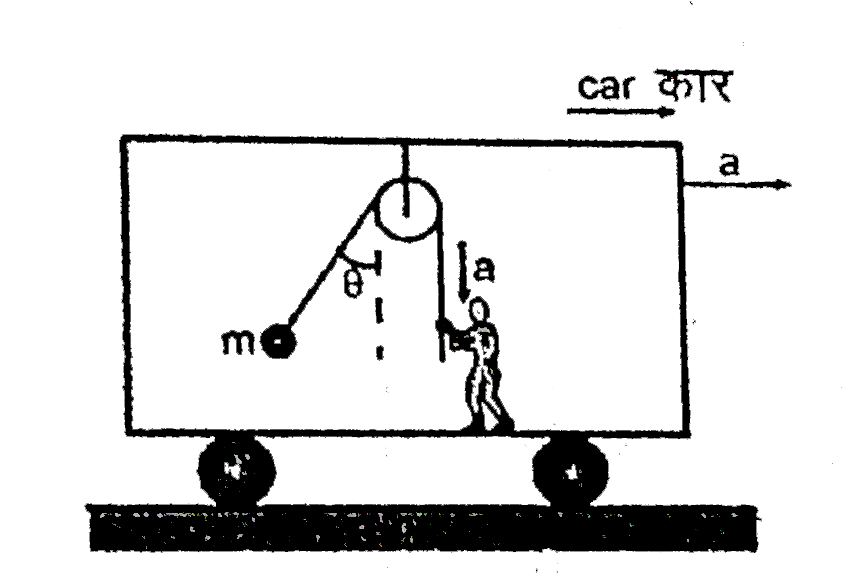A bob is hanging over a pulley inside a car through a string. The second end of the string is in the hands of a person standing in the car. The car is moving with constant acceleration a directed horizontally as shown in fig. The other end of the string is pulled with constant acceleration a vertically. The tension in the string is equal to

m√g2+a2
m√g2+a2−ma
m√g2+a2+ma
m(g+a)
The correct Answer is:C
Applying Newton's law perpendicular to string
mgsinθ=macosθ
⇒tanθ=ag
Applying Newton's law along string,
T−mgcosθ−masinθ=ma
⇒T=m√g2+a2+ma.

Topper's Solved these Questions
- NEWTON'S LAWS OF MOTION 1Book:CENGAGE PHYSICSChapter:NEWTON'S LAWS OF MOTION 1Exercise:Multiple Correct
Explore 11 Videos
- NEWTON'S LAWS OF MOTION 1Book:CENGAGE PHYSICSChapter:NEWTON'S LAWS OF MOTION 1Exercise:Assertion-reasoning
Explore 15 Videos
- NEWTON'S LAWS OF MOTION 1Book:CENGAGE PHYSICSChapter:NEWTON'S LAWS OF MOTION 1Exercise:Subjective
Explore 15 Videos
- MISCELLANEOUS VOLUME 2Book:CENGAGE PHYSICSChapter:MISCELLANEOUS VOLUME 2Exercise:INTEGER_TYPE
Explore 10 Videos
- NEWTON'S LAWS OF MOTION 2Book:CENGAGE PHYSICSChapter:NEWTON'S LAWS OF MOTION 2Exercise:Integer type
Explore 1 Video
Similar Questions
A bob is hanging over a pulley inside a car through a string. The second end of the string is in the hand of a person standing in the car. The car is moving with constant acceleration 'a' directed horizontally as shown in figure. Other end of the string is pulled with constant acceleration ‘a’ vertically. The tension in the string is –

View SolutionConsider the situation shown in the figure. The surface is smooth and the string and the pulley are light. Find the acceleration of each block and tension in the string.

View Solution
Knowledge Check
A bob is hanging over a pulley inside a car through a string. The second end of the string is in the hand of a person standing in the car. The car is moving with constant acceleration 'a' directed horizontally as shown in figure. Other end of the string is pulled with constant acceleration 'a' (relative to car) vertically. the
 Amg(cos2θ+sinθ)+maBm√g2+a2−maCm√g2+a2+maDm(g+a)
Amg(cos2θ+sinθ)+maBm√g2+a2−maCm√g2+a2+maDm(g+a)A bob is hanging over a pulley inside a car through a string. The second end of the string is in the hand of a person standing in the car. The car is moving with constant acceleration 'a' directed horizontally as shown in figure. Other end of the string is pulled with constant acceleration 'a' (relative to car) vertically. the
 Am√g2+a2Bm√g2+a2Cm√g2+a2+maDm(g+a)
Am√g2+a2Bm√g2+a2Cm√g2+a2+maDm(g+a)A small sphere is suspended by a string from the ceiling of a car. If the car beings to move with a constant acceleration a, the inclination of the string to the vertical is:
Atan−1(a/g) in the direction of motionBtan−1(a/g) opposite to the direction of motionCtan−1(g/a) in the direction of motionDtan−1(g/a) opposite to the direction of motion
A pedulum is hanging from the ceiling of a car having an acceleration a0 with respect to the road Find the angle made by the string with vertical at equilibrium Also find the tension in the string in this position
 .
.
View SolutionA block of mass 2 kg is hanging over a smooth and light pulley through a light string. The other end of the string is pulled by a constant force F=40N. The kinetic energy of the particle increase 40 J in a given internal of time. Then
View SolutionOne one rainy day a car starts moving with a constant acceleration of 1.2m/s2. If a toy monkey is suspended from the ceilling of the car by a string, then find the angle with the vertical with the string be now inclined.
View SolutionA block of mass M is hanging over a smooth and light pulley through a light string. The other end of the string is pulled by a constant force F. The kinetic energy of the block increases by 20 J in 1 s:-
View SolutionA block of mass M is hanging over a smooth and light pulley through a light string. The other end of the strinig is pulled by a constant force F. The kinetic energy of the block increases by 20J n 1s.
View Solution

